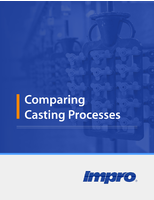Delcam to Launch DentCAD for Dental Design at Euromold
Share:
Delcam will launch DentCAD, its new computer-aided design program for the dental industry, at the Euromold exhibition to be held in Frankfurt from 3rd to 6th December. The company will also demonstrate the latest version of its DentMILL program for the automated machining of dental caps, bridges and abutments.
DentCAD enables the fast, reliable creation of dental restorations, including copings, crowns and bridge frameworks. It offers levels of speed and accuracy that are impossible to achieve with manual methods. Complete restorations can be designed within minutes of importing the scanned data.
Another key benefit of the software is that is extremely easy to use and so is ideally suited to dental technicians that have no previous experience of computer-aided design. The whole process is based on a series of "Wizards" that use dental terminology and imagery to guide the user through the entire design process.
A wide range of visualisation tools are available at every stage, including sectioning, shading and transparency options that allow detailed inspection of the shape being developed. This ensures that the results are exactly as required by the patient.
The system is also very flexible, so allowing different design options to be developed and compared. For example, key parameters like the margin line and the cement thickness can be varied and the computer model will automatically update to reflect the changes. In addition, DentCAD's sculpting tools let the user add or subtract material interactively, while the system's dynamic editing tools allow the complete model to be reshaped quickly and effectively.
The latest version of the DentMILL knowledge-based machining system includes a new module for the manufacture of abutments. Like DentCAD, DentMILL is a highly-automated program, making it easy for technicians with minimal manufacturing experience to produce copings and bridges in ceramics and titanium using the latest computerised machining technology. The new release also includes five-axis machining options for the first time, to allow the manufacture of more complex parts with more efficient use of materials.
As with the existing functionality in DentMILL, the new options are based on Delcam's PowerMILL CAM system, which is widely acknowledged to be the leader in high-speed and five-axis machining. This allows the software to offer a far wider range of proven machining strategies than is available in other dental CAM programs. The new five-axis options are particularly important for abutment manufacture as these components are difficult to produce with three-axis machining.
In addition, the new five-axis functionality can reduce material wastage when producing copings and bridges. Previously, all the components needed to be oriented within the material block so that they could all be machined in a single direction. With the five-axis approach, the components can each be rotated to minimise the block thickness required, since the different pieces, or even different areas within a single part, can be machined in different directions. This means that a set of parts can be produced from a thinner block of material so reducing material costs and machining times. Five-axis machining can also be used to machine parts containing undercuts.
Unlike many alternative dental design and machining programs, both DentCAD and DentMILL are completely 'open'. For example, they accept data from any scanner capable of exporting data in the STL format used widely within the dental industry. It is expected that many companies will want to use DentCAD alongside DentMILL. However, both programs can be used to create a complete manufacturing process with any combination of design software, scanner, machining software and computer-controlled machine tool. Most other dental CAM programs are part of a 'closed' system that can only work with unique data formats, or specific materials or machining equipment.




